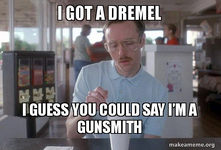- Messages
- 17
- Reactions
- 17
What do you guys think about endshake bearings? Is this an acceptable way to resolve endshake on a revolver? Do they cause binding/malfunctioning in your experience? Should I pay the $200 for S&W to stretch the yoke (I know this is a more permanent solution). Let me know what you guys think.













